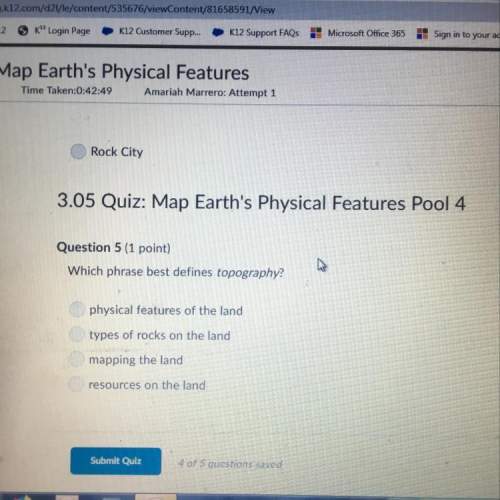
Chemistry, 11.03.2021 20:10 aubrey1161
The rate law for the reaction, A+B→C+D, is rate=k[A][B].
Which of the following is true?
The rate law for the reverse reaction is the same but with a change in the sign.
The rate law for the reverse reaction must be determined experimentally.
The rate law for the reverse reaction is rate=k[C][D]. T
he rate law for the reverse reaction is rate=k-1[C][D].

Answers: 1


Another question on Chemistry

Chemistry, 21.06.2019 13:30
A48 g piece of ice at 0.0 ∘c is added to a sample of water at 7.4 ∘c. all of the ice melts and the temperature of the water decreases to 0.0 ∘c. how many grams of water were in the sample?
Answers: 1

Chemistry, 22.06.2019 12:00
Give the set of reactants (including an alkyl halide and a nucleophile) that could be used to synthesize the following ether: draw the molecules on the canvas by choosing buttons from the tools (for bonds and charges), atoms, and templates toolbars, including charges where needed. ch3ch2och2ch2chch3 | ch3
Answers: 1

Chemistry, 22.06.2019 12:20
Achemistry student weighs out 0.306 g of citric acid (h3c6h5o7), a triprotic acid, into a 250 ml volumetric flask and dilutes to the mark with distilled water. he plans to titrate the acid with 0.1000 m naoh solution. calculate the volume of naoh solution the student will need to add to reach the final equivalence point. be sure your answer has the correct number of significant digits.
Answers: 3

You know the right answer?
The rate law for the reaction, A+B→C+D, is rate=k[A][B].
Which of the following is true?
Questions

Physics, 03.11.2020 14:00



Social Studies, 03.11.2020 14:00



English, 03.11.2020 14:00


Mathematics, 03.11.2020 14:00


Biology, 03.11.2020 14:00

Mathematics, 03.11.2020 14:00

Mathematics, 03.11.2020 14:00

Chemistry, 03.11.2020 14:00


Mathematics, 03.11.2020 14:00

Business, 03.11.2020 14:00


History, 03.11.2020 14:00




